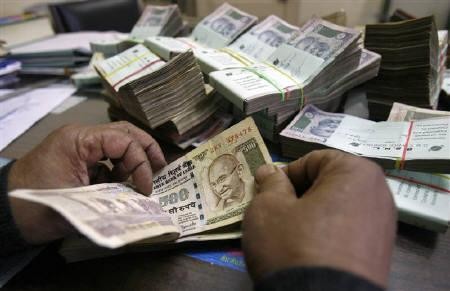
India's economy received its biggest boost in more than two years, most likely under the Modi effect, with the Gross Domestic Product (GDP) growing by 5.7 percent in April-June, the highest in nine quarters.
India's growth had stalled below five percent for the last two years in the longest spell of slow growth in 25 years, but economic hopes rose once again when pro-business leader Narendra Modi came to power in May.
The growth for the April-June quarter spiked much above the 4.6 pecrent growth registered in the previous quarter. A growth in the manufacturing and service sectors reportedly fueled the hike, with the former growing an annual 3.5 percent higher compared to the previous quarter, and the latter grew by 6.8 pecrent.
Optimism and improved economic sentiments backed the growth.
"GDP growth has largely been lifted due to a weak base and partly due to improved sentiments following a decisive election mandate," DK Joshi, chief economist at ratings agency Crisil told The Times of India.
The Modi effect is clear in this positive economic trend, as initiatives taken by his government to attract businesses and foreign investments has served well for the economy, with Indian shares performing the best in Asia this year, according to Reuters.
The Modi government had stated in the Economic Survey released ahead of the General Budget that the GDP growth for the current fiscal year is estimated to be between 5.4 percent to 5.9 percent. The government has also said that the growth could reach up to 7 to 8 percent in the coming years due to measures taken to improve investment climate and governance
However, risks still remain large for the economy, especially from the poor monsoons that could severely impact agricultural output and the global turmoil, especially in the Middle East, pushing up oil prices.
With the Supreme Court recently deeming all coal blocks sold since 1993 illegal and their fate still pending for the final verdict on 1 September, the economy could face another challenge if the coal allocations are cancelled and production stopped.
However, whether this growth hike can be seen as a turnaround for the economy is debatable, given that the figures reflect a jump thanks to weak economic activity last year, and the economy still faces grave challenges.
The government is optimistic of further growth, with the finance ministry issuing this statement – "With improvement witnessed in some important sectors including manufacturing as well as in the performance of exports, along with the measures taken by the government, the economy can be expected to show further improvement in the remaining part of the year".
However, economists believe celebrations should be on hold till further steps are taken especially to bring about structural changes in the tax regime, labour rules and land acquisition laws.
"A strong recovery is not on the cards until ...greater efforts are made at reducing structural bottlenecks," Shilan Shah, an analyst at macro-research firm Capital Economics told Reuters.
"For India's better economic performance to be sustained, the government will have to follow through on politically costly measures," Bill Adams, senior international economist for PNC Financial Services Group added.









